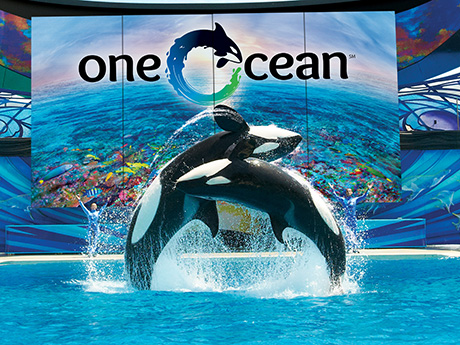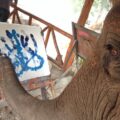
Behind the glass, the animals stare back. Parents lift their kids higher to see the lion. Teenagers pose for selfies with giraffes. Someone reads the little plaque explaining habitat and diet. It’s all so ordinary that we don’t notice how strange it is. We’re standing in a world where wildness is staged and life itself becomes part of the exhibit. Zoos present themselves as safe and educational, but they also blur the line between art and exploitation. Each animal, stripped from its environment, is curated and framed for human enjoyment. The zoo is a gallery that never closes, one where the art breathes but not freely.
In many ways, zoos operate like museums. The animals are the artwork, arranged and classified to tell a story about power, beauty, and human dominance. Enclosures function as frames, dictating what we see and how we see it. The soft lighting, landscaping, and plaques that describe each “piece” turn living beings into objects of aesthetic appreciation. Even the architecture reflects this idea. Panoramic glass walls replace traditional cages, creating the illusion of openness while maintaining absolute control. Just like art museums display idealized versions of culture, zoos display idealized versions of nature. They allow us to consume the “wild” without confronting its reality. It’s not nature we’re witnessing. It’s a performance designed to soothe our conscience and flatter our curiosity.
But behind the performance lies the crime. Captivity itself is a quiet kind of violence that hides behind the language of preservation. The concept of the zoo relies on a contradiction; protecting animals by imprisoning them. Their instincts are all compromised in the name of human education. What’s worse is that this confinement becomes normalized through repetition. Field trips, family photos, and conservation campaigns are all standard. We’ve learned to associate cages with care. This transformation of suffering into spectacle is what makes the zoo a kind of aestheticized crime scene, where cruelty is presented as culture.
Real tragedies occasionally shatter the illusion. In 2016, when Harambe, a gorilla at the Cincinnati Zoo, was shot after a child fell into his enclosure, the world erupted in outrage and memes. It wasn’t just the death that shocked people; it was the exposure of a system we usually ignore. Harambe became both a martyr and a meme, symbolizing the blurred line between empathy and entertainment. The same happened at SeaWorld with Tilikum, the orca who killed his trainer after decades of confinement. Documentaries like Blackfish revealed how his aggression was the byproduct of trauma, showing that even highly intelligent creatures break under the weight of being treated as props. These incidents don’t happen despite captivity, but they happen because of it. They’re the moments when the art breaks character and reveals the artist’s cruelty.
When we look closely, zoos tell us more about humans than animals. They reveal our need to dominate and aestheticize life until it feels manageable. The zoo becomes a metaphor for how society disguises control as culture. The next time we stand before an enclosure, maybe the real question isn’t whether the animal belongs there, but whether we do. The truest art crime of all might be our ability to look at a cage and call it compassion.







This article honestly had me reflecting on my entire life. I was one of those kids that enjoyed going to the zoo and loved seeing all the different animals. As I got older, I started to think about how these animals are held in captivity for our pleasure, but allowed myself to ignore it so that I could still enjoy visiting the zoo. The alliteration and poeticism of this article really stirred a sense of guilt in me, especially when you said that zoos teach us more about humans than animals. There are many parts of my life, beyond how I view zoos, where I twist my genuine feelings to something positive because I don’t like the alternative.